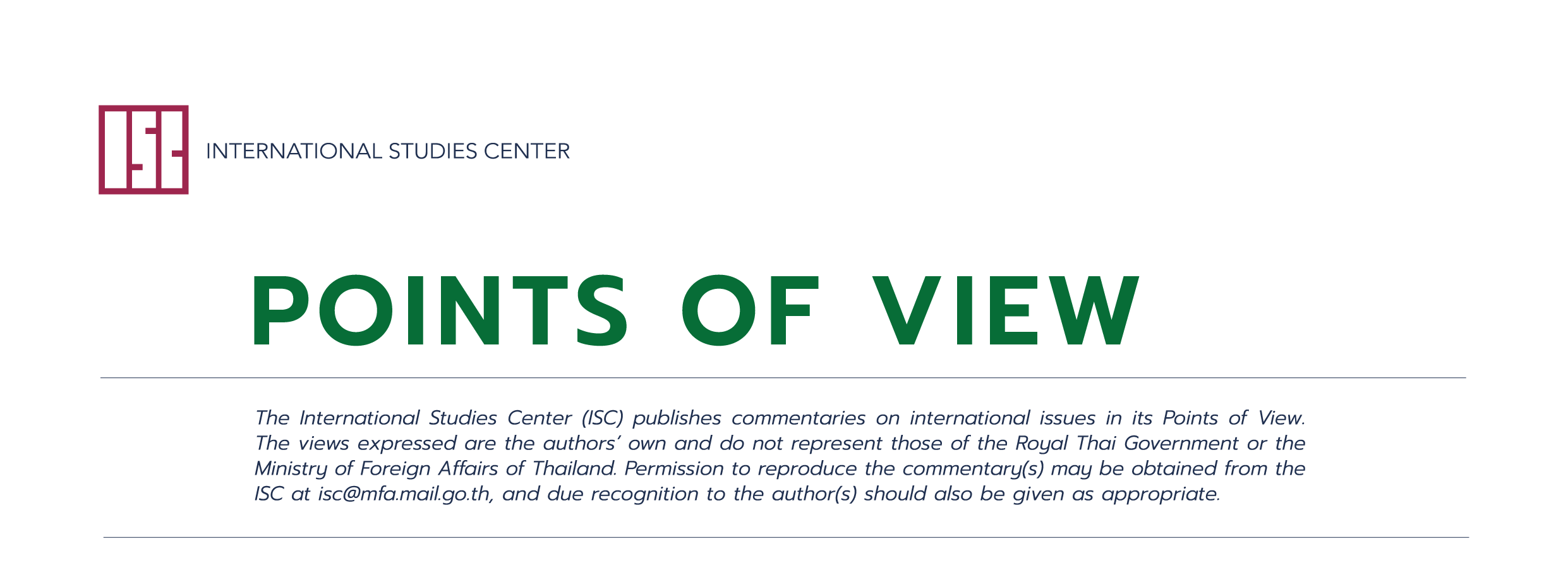Thailand's Reopening Strategy: Rationales and Prospects | Kaewkamol Pitakdumrongkit
Thailand's Reopening Strategy: Rationales and Prospects | Kaewkamol Pitakdumrongkit
วันที่นำเข้าข้อมูล 14 Oct 2021
วันที่ปรับปรุงข้อมูล 14 Dec 2022
 |
No. 8/2021 | October 2021
Thailand's Reopening Strategy: Rationales and Prospects
Kaewkamol Pitakdumrongkit*
(Download .pdf below)
On 11th October 2021, the Thai Prime Minister Prayut Chan-o-cha made a public announcement regarding the country’s reopening roadmap. For instance, there will be no mandatory quarantine for fully vaccinated visitors from 10 low-risk countries such as China, Germany, Singapore, and the US. These international travellers only need to present to the Thai authorities their PCR test result done in their respective country, and later take another test upon arrival in Thailand.
Such the announcement came with no surprise. There are several sound reasons for the reopening. First, tourism accounts for 20% of the country’s GDP and employs about 20% of the workforce. The sector has been badly hit by the COVID-19 pandemic. In 2019, the state welcomed about 40 million international travellers and collected US$ 60 billion in revenues. However, the number plunged to only 6.7 million in 2020, constituting an 83% decline. Therefore, reopening will not only bring back jobs to tourism and related industries but also help re-galvanise the economy. Second, international competition tempted the Thai government to resume international tourism. In his speech, Prime Minister Prayut stressed that the state cannot postpone its reopening plan any longer. This is largely due to the easing of overseas travel restrictions by many countries such as Australia, Singapore, and the US. Viewing the Administration’s strategy in this light, it makes sense to reopen the borders very soon to maintain Thailand’s position as one of the world’s air connectivity hubs.
Another reason concerns with the success of the Phuket Sandbox. The scheme was launched on 1st July 2021. It generated 1.63 billion baht within two months. The revival of Phuket tourism eventually convinced the authorities that further safe reopening is possible. In addition, a change in mindset of leaders in other countries also plays a role. As the Delta variant is more contagious than the previous ones, many states have abandoned the “zero COVID-19” strategy and adopted a new approach of living with the virus. Australia, New Zealand, and Singapore are cases in point. Likewise, realising that chasing this “zero COVID-19” dream is no longer feasible, the Thai government switched its policies. In his remark, Prayut posited that “The time has come for us to ready ourselves to face the coronavirus and live with it as with other endemic infections and diseases, much as we have learnt to live with other diseases with treatments and vaccinations”.
Regarding the effects of border reopening, it may not boost much tourism by the end of this year. Due to international travel restrictions, sojourners now usually plan their overseas trips in advance. Therefore, it would take a few months at least to witness a rise in the number of foreign tourists. Nevertheless, the reopening immediately bolstered investor confidence. One day after the announcement, the Thai Stock Exchange’s tourism and leisure index rose by “4.42% when markets opened on Tuesday, compared to a benchmark increase of 0.82%.” This is a clear indication that the business community is betting on the positive prospects of the policy.
Looking ahead, one of the pressing issues the government needs to address is “How to make the reopening sustainable?” Critics contended that about 50% of the population got their first dose of COVID-19 vaccines and only 34% of the residents are fully inoculated. This raised doubt about the sustainability of reopening. Despite the challenges, there are ways for the country to embrace international tourism and keep the virus under control.
First, the government should enhance its effort to provide financial assistance to firms in the tourism and tourism-related sectors. It could be in forms of low-interest loans to small and medium enterprises (SMEs) as well as tax holidays. Admittedly, the government allowed SMEs to apply for support. However, the approval rate is still low and money does not effectively reach the hands of many small entrepreneurs, entailing the plunging credit growth of SMEs. This is partly caused by the fact that the criteria for approval are set too high as the authorities fear non-performing loans. Yet, in order to achieve sustainable international tourism, the government should take more risks and disburse more fund to the private sector. Doing so will better enable tourism and its related industries to prepare their reception of foreign visitors in months and years to come.
Also, vaccination targeting individuals working in these industries must be accelerated. These groups range from hotel staff and waiters at bars and restaurants to truck drivers delivering products to resorts and spas. Even better, vaccination should be extended to the family members sharing the living spaces with these workers. It is because several infections are within the same households. This is a crucial step to sustain tourism supply chains. In other words, these frontline workers must be healthy as their illnesses and hospitalisation could disrupt the supply chains.
Moreover, to further boost international travel, the Thai authorities should not only promote regular travel destinations but also less-known getaways. The concepts of community-based tourism or cultural tourism must be revisited. There are previous success stories that can be replicated or modified to stimulate tourism and economy in smaller towns. Mae Kampong is one example. Due to collaboration between Ministry of Tourism and Sport and the Ministry of Labour, this village in Chiang Mai province has been transformed into a tourist spot and hence improved the lives of the local people.
To conclude, Thailand’s reopening plan constitutes a silver lining. The rationales for such policy are sound. Yet, implementing it effectively needs more work and cooperation among government agencies and between the government and private sector.
[*] Assistant Professor and Deputy Head of the Centre for Multilateralism Studies (CMS), S. Rajaratnam School of International Studies (RSIS), Nanyang Technological University (NTU), Singapore